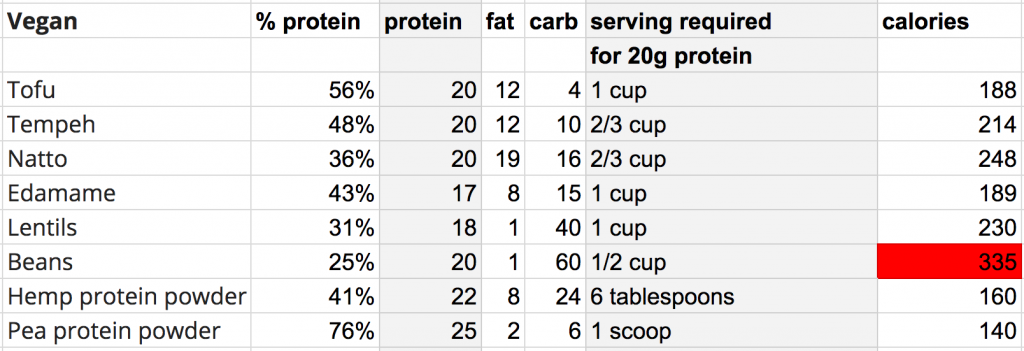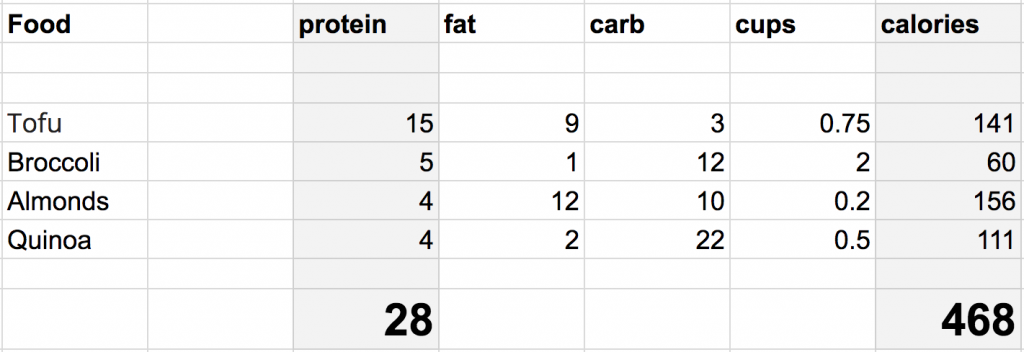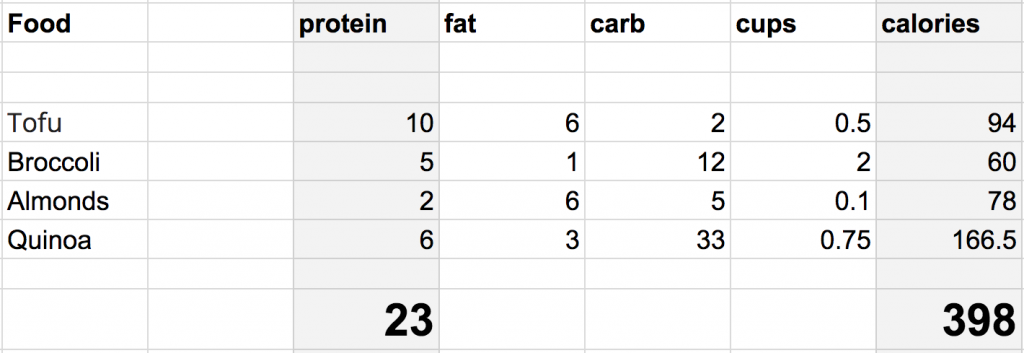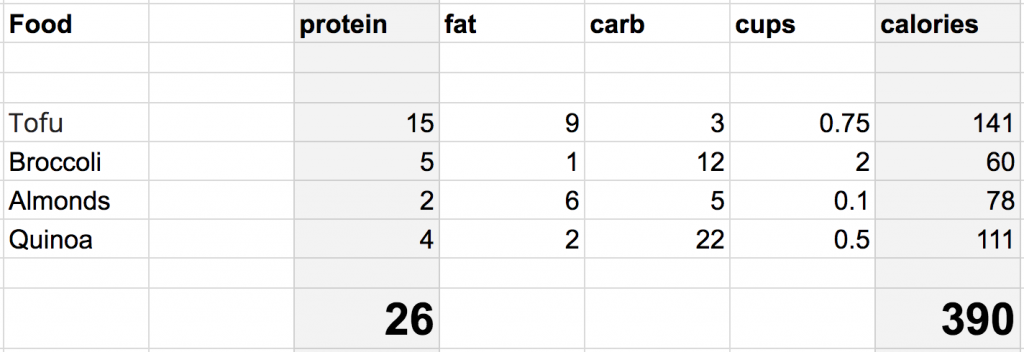I have a lot of clients who want to eat vegan, vegetarian, or some meals vegan or vegetarian.
If that’s something you want to do, lets talk about how to do it right!
This paper “Fueling the Vegetarian (Vegan) Athlete” is a great review of sports nutrition stances:
https://www.drfuhrman.com/library/vegan_athlete.pdf
That paper puts protein requirements between 1.4-2.0 grams per kilogram of bodyweight, for vegan or vegetarian athletes.
For people who track their weight in pounds, that’s 0.6-0.9 grams of protein per pound of bodyweight, each day.
That means we need to take a good look at vegan and vegetarian options for protein.
There’s a ton of silly misinformation out there about vegan and vegetarian protein that gets people all mixed up. It’s like people deliberately compare apples to oranges to make a point.
We’re going to take a look at apples to apples.
Lets Take A Look At The Facts
I don’t really have any point to make or any axe to grind here, so I’m just going to compare apples to apples. lets take a look at what it would take to get about 20g of protein with each of these foods.
This first table is a bunch of really great vegan protein sources!
These could be your go-to protein sources if you’re vegan.
You’ll notice that if you go with beans, you’ll have to watch out for the calories a little bit. You might want to use beans in combination with something else, to try to meet your protein needs within your calories.
Otherwise, everything else above is an A+ vegan protein source!
If you do eggs and dairy, you’ll notice these are some other really great protein options!
The only thing that might not work would be Kefir, requiring three cups at 1110 calories to get 20g of protein!!!
Otherwise, dairy and eggs are an amazing way to meet your protein needs, and fit them within your calories.
Nuts are a little trickier.
Because they are so calorically dense, you probably don’t want to make them your primary protein source. But they can be an awesome mixed source of fat and protein, and could absolutely be part of a balanced meal. Just watch the serving sizes and make sure the calories don’t get away from you.
Quinoa is one of those things that people are like “Quinoa has so much protein!”, but when you look at the numbers, it’s only 14% protein.
That means that to get 20g of protein (to use it as a protein source) you’d have to have 2.5 cups, which is 555 calories.
That’s when we realize that it’s actually a carbohydrate.
Now, it’s awesome to have a carbohydrate that has a little bit of protein in it. And, it can absolutely contribute to your daily protein, as part of a balanced meal. It just isn’t a primary protein source.
Here is where things get downright silly.
If I see one more meme that says that broccoli is a better protein source than beef, I’m going to scream. Of course it’s not. It’s not even on the same planet.
It would take a ridiculous 7.5 cups of broccoli to meet your protein needs for one meal! You have to be freaking kidding me.
And yet there are diet gurus spouting this kind of nonsense all of the time.
Vegetables are awesome ALREADY! Vegetables should be half of your plate ALREADY! You want vegetables for all of the great vitamins and all of the awesome fiber! There are so many freaking reasons to eat vegetables!
If you’ve gotten sucked into this, it’s not your fault. People with letters after their name and internet followings and memes say this stuff. Don’t blame yourself. Blame them. Just do the math for yourself.
Seriously, vegetables should be 1/2 your plate. You want vegetables. We love vegetables.
But vegetables are not a realistic source of protein.
You Can Absolutely Meet Your Protein Needs as a Vegan or Vegetarian
Take a look at the numbers above, and plan out your meals.
Just like that paper, Fueling the Vegan Athlete says, strength training vegans have the same protein needs as everyone else. And with some smart planning, you can totally hit your protein needs inside of a balanced meal.
Lets take a look at meal made from stuff above, in different quantities:
The table above is a fairly high protein vegan meal.
It goes to show that it’s actually pretty simple to put together a healthy balanced meal.
Here’s a much lower calorie version of that same meal. Notice how all of the different foods add up to a great amount of protein.
Here is a version that has higher fat. A lot of people feel more full with a balance of moderate fat, moderate carbohydrates, and moderate proteins.
Here’s where we’re getting to a really low calorie meal, with a fair amount of protein, that’s vegan.
And here is a slightly different mix of that same high protein, low calorie vegan meal.
Looking at all of these tables, you should get the idea that you can play with the portion sizes and get whatever numbers you want. Obviously you could do more or less of anything to meet your individual energy needs, these examples are just to get your wheels turning.
Sort out the calories and protein for you to maintain your goal weight and leanness.
With such balanced, obviously healthy meals, you should be feel really satisfied and full with these meals, as long as you don’t push the calories too low.
You’ve Got So Many Options
Most of my clients are omnivores. I’m an omnivore. It’s relatively easy for omnivores.
But a fair amount are vegans, vegetarians, part time vegans, part time vegetarians, mostly vegan but also eat fish… whatever your personal mix is, and for whatever reasons, you can absolutely create meals that fit into your fitness goals as well.
Whether you are an omnivore or a vegetarian or a vegan, it’s as simple as this:
- 1/4 of your plate protein
- 1/4 of your plate carbohydrates
- 1/2 your plate vegetables
- 1 tablespoon of fat
Balanced meals. Pretty simple, right?
Josh Hillis










Leave a Reply